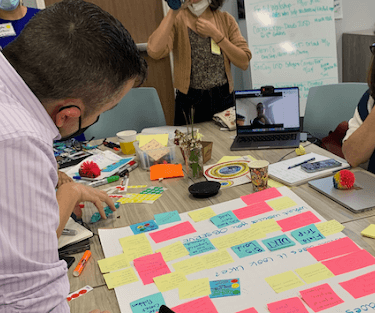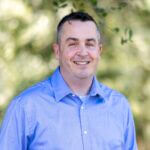In my first year of teaching I worked at a small public school in the Oakland Unified School District. The school included both middle and high school and in that first year I taught middle school physical science, high school chemistry, and an advisory class. I had done my student teaching in the San Francisco Unified School District, in a high school chemistry class. I thought my student teaching had gone relatively well, so I began that first year on my own with a mix of excitement to teach chemistry and a little apprehension about the middle school science classes. A few months into the first semester, I was overwhelmed and close to burning out in all of my classes, including chemistry. I struggled with classroom management and I was behind on all of my grading. I struggled to make the content engaging for my students, and they were not enjoying the classes at all. During my one preparation period in the afternoon, I sometimes had to just put my head on my desk because I was so exhausted. I wondered how I was going to make it to the winter break.
At some point toward the end of that first semester, I managed to gain access to a new chemistry curriculum the district was trying out. I had never seen anything like this curriculum before. The program was an entire year of chemistry lessons broken up into six-week thematic units, all revolving around big questions that students found engaging. All of the lessons were student-centered and inquiry-based; students worked collaboratively in small groups to make sense of the content. These lessons were research-based and had been tested in classrooms. The lesson plans provided background chemistry content information for the teacher, and more importantly, the plans provided a step-by-step process for how to teach that content using the materials provided. After just a few weeks of teaching lessons with this new curriculum, my students started talking to each other in class about chemistry and everyone began to make progress. I was amazed at the learning gains my students made after I started using these materials. I learned so much about chemistry and best practices for teaching chemistry just by engaging with that curriculum.
My experience with that chemistry curriculum changed the way I thought about teaching and learning science. It also made me realize how unfair it is to ask teachers to create something like that all by themselves. I have no doubt that teachers are highly qualified experts in the subjects that they teach. I know as well that so many teachers have created amazing lessons and units for the classes that they teach. But I also know that there are teachers out there who struggle just to make it through the day like I did when I first started teaching. When I left the classroom, I looked for positions that would allow me to support teachers in the challenging work that they do. I was lucky enough to get a position as a science development editor with the publisher that produced the chemistry curriculum that had helped me so much in my first year. Since then, I’ve had the opportunity to work on many different STEM educational programs while working in publishing and as a member of the science team at the San Francisco Unified School District. One thing that these experiences have taught me is that collaboration is crucial in creating high-quality teaching and learning materials. I have also learned that when educators are given the opportunity to work together, they can create something that is greater than what any one person can do alone.
At the end of August 2022, we had our first big gathering with organizations and individuals that have come together to develop K–12 curricular resources for the Climate Change and Environmental Justice Program (CCEJP). In the image, you can see the back of my head at the table where I worked with several members of the middle school writing teams during our time together. We spent the time during that segment of the day brainstorming and sharing ideas about the curriculum we will be working on. We worked together to generate ideas about what it means to write student-centered, place-based, interdisciplinary learning units about climate change and environmental justice.

The opportunity to collaborate with so many amazing organizations, educators, and experts is one of the many reasons I feel so grateful to be working here at Ten Strands. We are working together with our CCEJP partners to create instructional units that are inquiry-based, standards-based, and integrate California’s Environmental Principles and Concepts. Together, we are taking on the responsibility to ensure that our teaching and learning materials are equity focused, interdisciplinary, and allow students to work toward solving problems in their own communities. We will be working with teachers and students from all over California to produce these materials and it is this collaboration with so many people that will allow us to meet the high standards that we have for this curriculum.


One Response
Hello Jeffrey – what a breath of “clean, fresh air” and valuable personal professional experiences you bring to your job of creating a new set of environment based/environmental educational teaching tools for our California teachers. Wishing you all the best – Kay Antunez de Mayolo (former California Project Learning Tree State Coordinator and secondary science educator)